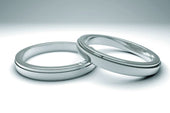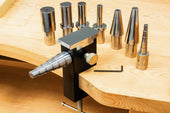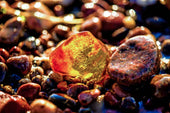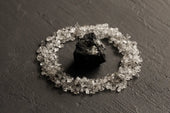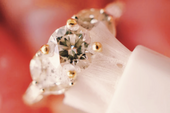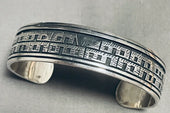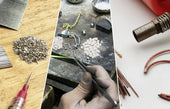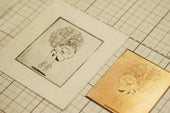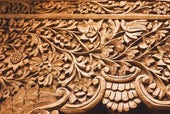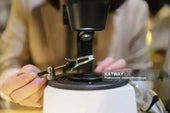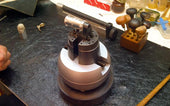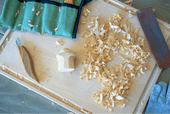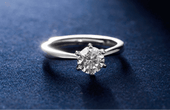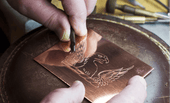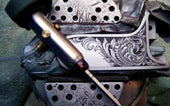Easy to Understand the Craft of Making Gold Jewelry
Gold has always been widely loved by people, not only for its investment value, but also for its simple, elegant, and exquisite appearance. Every piece of gold jewelry needs to be continuously polished through multiple exquisite craftsmanship processes before entering the market. The texture, style, and shape of gold all have their own advantages, which actually depends on the craftsmanship of gold. Different techniques can showcase the unique characteristics of gold jewelry.
With the development of the gold jewelry industry, the production process of gold jewelry is constantly being updated and iterated. Common processes include traditional traditional traditional methods, manual processes, hydraulic processes, reverse molding processes, stamping processes, machine weaving processes, whole flower processes, flower silk processes, porcelain firing processes, as well as innovative 3D electroforming processes, 5D cyanide free electroforming processes, 5G processes, etc. The combination of these techniques can break free from the stereotypical and outdated impression of gold jewelry, emitting an artistic beauty that is both ancient and fashionable.
Today, we will learn about the relevant production techniques of gold jewelry.
Handmade craftsmanship
Traditional workers and masters usually use pure manual methods to finely carve gold, and this process of jewelry processing using pure manual labor is called handicraft. Nowadays, pure handmade craftsmanship is very rare.
As a traditional handmade craft, it requires multiple processes to complete, including design, shaping, carving, tapping, inlay, polishing, etc. Handicrafts require skilled craftsmen to operate, who need to master various skills and techniques in order to produce high-quality gold jewelry.
The characteristics of handicrafts are fine craftsmanship, time-consuming and labor-intensive, and strong artistry, so the price of gold jewelry made by handicrafts is usually relatively high. However, handcrafted gold jewelry also has unique artistic charm and cultural connotations, making it deeply loved by consumers.

Ancient craftsmanship
Inherited from ancient times, the palace office is usually known for its grandeur, elegance, and exquisite craftsmanship. Based on ancient craftsmanship and combined with modern techniques, the eight major gold casting techniques of carving, hammering, filigree, carving, inlay, and gold repair are restored, and then carefully polished by hand. The ancient craftsmanship has a warm and elegant color, highlighting a restrained and understated sense of luxury.
Oil pressure process
Put the relatively high-quality gold raw material into an hydraulic press and press the gold block into shape with a heavy pressure of over 100 tons.
Whole flower process
The whole flower process refers to the process of making gold jewelry by pasting, inlaying, welding, and other techniques using gold wire or gold pieces according to the designed patterns and patterns.
Inversion process
Also known as pouring process, it uses a casting machine to place gold raw materials into a vacuum suction cable casting machine or centrifugal casting machine according to the required weight of each cup of workpiece. After being melted into a liquid at a high temperature of 1100 ℃, it is poured into a carved and dewaxed gypsum mold to make the desired style.
After being inverted, a series of surface processes such as mold holding, polishing, and embossing are required to ultimately become sparkling jewelry. At present, this process generally uses casting machines for mass production, which has the advantages of high efficiency and low cost.
Electroforming process
Nowadays, various 3D hard gold shaped gold jewelry are loved by the public with their innovative and unique designs.The hardness is four times higher than traditional gold, but the weight is reduced by 30%. At the same time, the hollow effect makes the jewelry layered and three-dimensional.
Electroforming process (5D cyanide free hard gold)
This process is based on 3D hard gold technology and is electroformed with cyanide free technology. The hardness is 1.5 times higher than traditional hard gold, and it is comparable to K gold in hardness. It has the characteristics of scratch resistance, deformation resistance, easy wiping, and mirror glare. The plasticity is very strong, and this process can be used to create more exquisite and three-dimensional jewelry styles and shapes, with extremely strong artistic value.

Filigree craftsmanship
Flower silk craftsmanship is a fine gold craft that processes gold into silk, and then uses methods such as coiling, pinching, filling, and stacking to make gold jewelry. According to the different decorative parts, different patterns of flower silk, arch silk, bamboo knot silk, wheat ear silk, etc. can be made. The production methods can be divided into pinching, filling, accumulating, welding, stacking, stacking, weaving, weaving, etc.
Porcelain baking process
Combining materials with ceramic and metal properties, and through high-temperature sintering, combining ceramic and gold materials to form a new material.
Machine weaving technology
Machine weaving is the process of using machines to weave gold jewelry. The weaving process is to weave gold wire according to the designed patterns and patterns, under specific mechanical equipment and process conditions, to weave the gold wire into a base pattern, then stick different flower patterns made by various process methods, and complete them through welding.
Carving technique
Carving flowers is one of the traditional metalworking techniques in ancient China. Carving flowers is a gold and silver craftsmanship that uses a small hammer to strike metal grooves of different sizes on both sides of a relatively smooth and flat metal, leaving marks on the surface of the metal, forming various textures, textures, lines, reliefs or indentations, etc., creating a multi-level three-dimensional decorative effect on a single metal surface and achieving fine and complex patterns. The patterns and patterns are deep and shallow, full of artistic appeal.
Embroidery craftsmanship
As an intangible cultural heritage, handmade embroidery has a history of two to three thousand years in China. It is a collective term for various decorative patterns embroidered on fabrics by needles and thread, and is one of China's excellent traditional ethnic crafts. The gold embroidery technique is to create a textured effect of gold needles threading on the surface of gold jewelry. The needle technique is versatile, and the fabric texture is rich, giving the flowers and leaves a clear and three-dimensional aesthetic with distinct layers and shapes.
Mirror gold craftsmanship
Mirror gold technology uses physical and chemical means to change the polymer properties on the surface of gold, presenting certain properties of gold. Its main function is to endow polymer materials with unique properties that meet environmental requirements, such as electromagnetic, optical, optoelectronic, thermal and other surface related functional characteristics, making gold have better wear resistance and glossiness.
Mirror gold craftsmanship has three major characteristics. 1. Mirror effect: The surface is flat and bright, achieving a clear effect of mirror reflection on people; 2. Wear resistance and scratch resistance: more than 10 times the wear resistance of ordinary gold; 3. Complex surface treatment process: 3-4 times more processing than ordinary gold, with a 360 degree mirror like appearance without dead angles.
Electric black (black gold) process
The gold electroplating black process is a surface treatment technique for gold, which involves electroplating a layer of black rhodium metal on the surface of gold. It is known as the electroplating black man in the industry and can present black patterns on the surface of gold, presenting a nostalgic style different from traditional gold with a single color.
5G process
On the basis of the pouring process, it is cast with "hard gold powder" added. 5G is the abbreviation for Five Good, meaning "Five Good Craft Gold", which means elegant resilience, firmness high hardness, talent artistry, brilliance bright colors, and nobility high purity. 5G technology is avant-garde and highly artistic, combining numerous advantages, and is deeply loved and respected by the public.
Stamping process
Using molds and stamping equipment to apply pressure to the gold sheet, causing deformation or separation of the gold sheet, thereby obtaining vivid relief patterns that appear more full. Stamping technology is usually used on locks, process gold bars, ancient Buddha heads, and plaques. Stamping technology has advantages such as high efficiency, high precision, and low cost.
The key to the beauty of gold jewelry lies in its craftsmanship. Gold jewelry that has not been processed by craftsmanship cannot shine with dazzling luster.
View more related articles
Engraving machine safety operation matters
Carving History and Culture: Art That Spans the Ages














